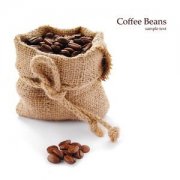Combine coffee from different producing areas together with coffee beans
I. mixing of coffee beans

People need to put coffee from different places together for several different purposes. The ideal goal, of course, is to piece together a coffee that tastes better than any of them. But generally speaking, Arabica coffee from a single origin is enough to make coffee that tastes good for export; it has a delicate flavor, a soft taste and a sweet aftertaste. So there is no need for "blending" (that is, putting together coffee from different places).
The main commercial purpose of blending coffee is to reduce costs and mix coffee with coffee that is not very good. In order to improve sales profits. There is also a possible purpose, that is to put together a unique taste, the unique taste of a brand. Customers who like this taste have to go to this factory to buy it, but can't get it from other suppliers. Another advantage of this is that the taste of the blended coffee will not change no matter how the taste of the coffee from different years changes in some places.
Here we ignore other possible commercial purposes and concentrate on understanding the blending for the purpose of improving the taste and quality of coffee.
Before blending any coffee, you should first understand the taste characteristics of all kinds of coffee, and at least make it clear in your heart that the taste of the kind of coffee you want to mix can not be achieved by any single coffee. It would be a pity if the blended coffee doesn't taste better than one or more of them. It would be better not to match. If you use some pretty good quality coffee for blending, the result is likely to be so.
Although some fixed varieties of coffee can be drunk directly as individual coffee, most of the coffee has more or less defects in flavor, such as no special flavor, lack of depth, not strong enough or a certain flavor is too strong. In order to make up for these deficiencies, it is necessary to combine several kinds of coffee beans with different characteristics to create a harmonious and deep flavor. Some people think that the fun of coffee is focused on baking and blending, while drinking coffee is just enjoying the fruits of your own victory. Blending coffee is not a random mix of coffee beans. Sometimes the blending of two kinds of boutique coffee will suppress each other's unique flavor, so blending is not simply blending several kinds of boutique coffee together. Matching is just like a painter adjusting and creating charming colors in a palette, so the mixer can also blend with coffee beans to produce an attractive flavor. Therefore, it is not too much to say that matching is an art. as an artist, the assembler needs not only experience and inspiration, but also through certain scientific calculation. The emergence of works of art will not be accidental, but the outbreak of long-term accumulation. The average blended coffee does not need to use more than five kinds of coffee beans. Because if there are too many kinds of coffee beans, the situation can be very complicated. Almost only a very special expert would not be confused by so many different coffee beans.
Important Notice :
前街咖啡 FrontStreet Coffee has moved to new addredd:
FrontStreet Coffee Address: 315,Donghua East Road,GuangZhou
Tel:020 38364473
- Prev

Basic knowledge of Coffee beans Chemical reaction of Coffee in Baking
Coffee has a rich, wide range of flavors. Coffee produced in different regions, different elevations, different climates and different producing areas has its own unique characteristics. Raw beans are fragrant and have no usual coffee taste at all; the taste of coffee comes from proper roasting. Show fruity (light roasting) or caramel sweetness (deep roasting). The lighter the baking, the more sour it tastes. Baking.
- Next

Bake first and then mix, or mix first and bake?
Is the relationship between mixing and baking first baked and then mixed, or is it first mixed and then baked? Which way is better? If you have a definite recipe, of course the easiest way is to mix the different coffee beans first and then roast them together. But if you're trying and comparing different blends and ratios, you'd want to roast the beans first.
Related
- Beginners will see the "Coffee pull flower" guide!
- What is the difference between ice blog purified milk and ordinary milk coffee?
- Why is the Philippines the largest producer of crops in Liberia?
- For coffee extraction, should the fine powder be retained?
- How does extracted espresso fill pressed powder? How much strength does it take to press the powder?
- How to make jasmine cold extract coffee? Is the jasmine + latte good?
- Will this little toy really make the coffee taste better? How does Lily Drip affect coffee extraction?
- Will the action of slapping the filter cup also affect coffee extraction?
- What's the difference between powder-to-water ratio and powder-to-liquid ratio?
- What is the Ethiopian local species? What does it have to do with Heirloom native species?

